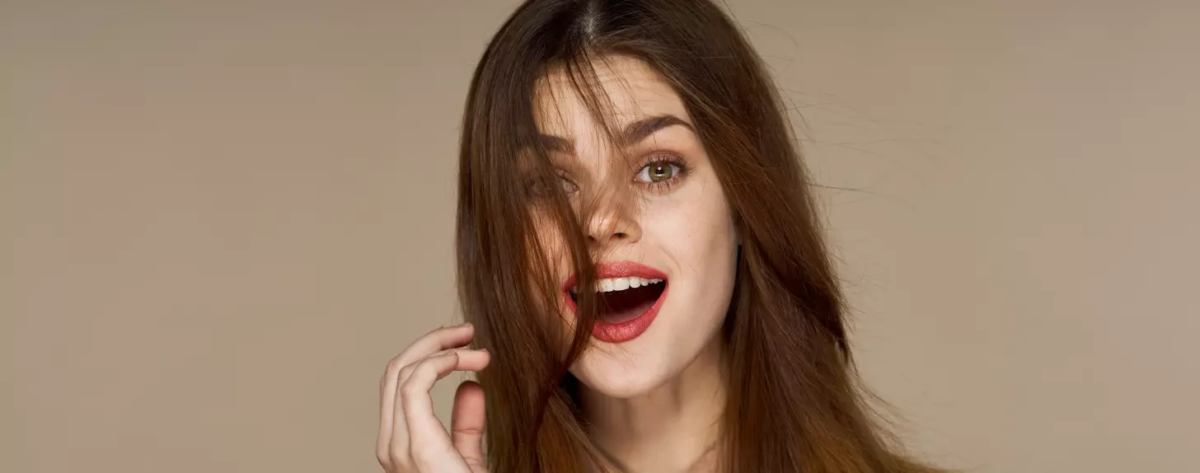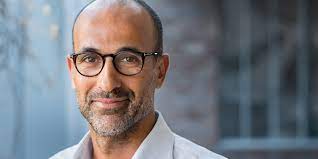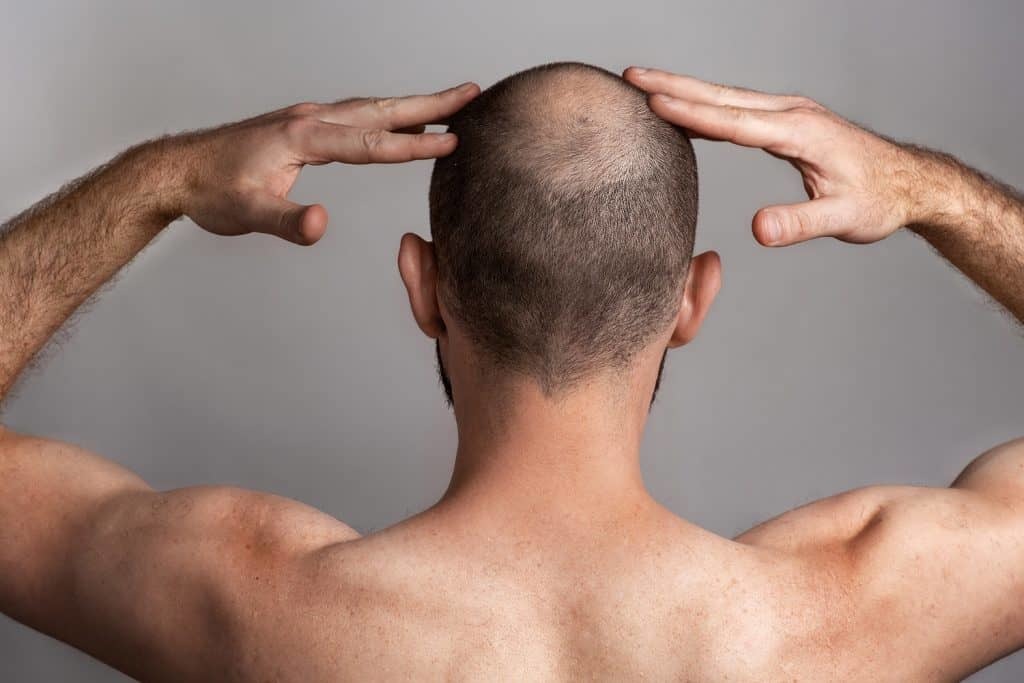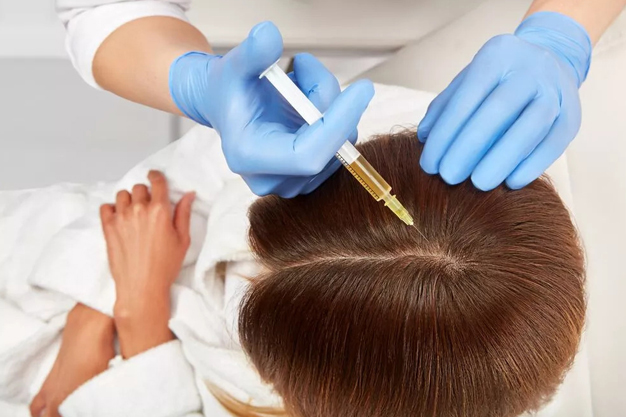A Complete Guide To Hair Transplants For Women
Introduction:
Who doesn’t want thick, voluminous, and healthy hair? Your hair represents your personality and your sense of fashion. So many people want to have perfect hair that compliments their appearance and matches their aesthetics. But hair loss is also a common problem faced by people all across the globe. If you are also suffering from hair loss and want to get back your healthy hair, don’t worry. Let’s learn everything regarding hair transplants and how can they benefit you all your life.
Understanding Hair Loss in Women:
Hair Loss is commonly seen in women of all ages. It is also medically known as “female pattern baldness” or simply “alopecia”. It is a slow and subtle decrease in the thickness and volume of hair on the scalp. Hair loss in women doesn’t occur all at once but spreads slowly with time and affects the whole scalp eventually. There is a huge number of factors that could trigger hair loss in women like hormonal changes, environmental factors, and use of harsh hair products, etc. Different medical conditions or deteriorating fitness lead to hair loss in women as well. If you want to treat your hair loss correctly, it’s essential to identify the exact cause behind it or the factors that are triggering its occurrence. Consulting a medical professional in this scenario will also be helpful because the healthcare provider is going to guide you through every step of your treatment.
Common Causes of Hair Loss:
Hair Loss can be caused by many different reasons. Understanding these causes and taking precautionary measures could help in minimizing the chances of hair loss. Here are some common causes of hair loss in women:
Hormonal Factors: A woman’s body goes through many hormonal changes and that is the main reason for hair loss in women.
Genetic Factors: Genetic predisposition is also an important root cause of hair loss in women. If there is a family history of alopecia, then a person is most likely gonna have it.
Medical Conditions: Certain medical conditions like autoimmune diseases, thyroid disorders, and other long-term illnesses are also a leading cause of hair loss in women.
Lifestyle: Many lifestyle choices such as using cosmetic hair products, consuming alcohol, eating non-healthy meals, and not following a proper hair care routine are also a contributing factor.
Environmental Factors: If a woman is exposed to pollution, smoke, UV rays, and rough changes in the environment, then she is more vulnerable to damaged hair or hair loss.
Hair Transplants:
A hair transplant is a medical treatment procedure that is frequently used to treat different hair issues including hair loss as well. The procedure of a hair transplant involves reallocating the hair follicles from body’s one part to the other. The hair follicles are taken out mostly from the back or sides of the scalp and then placed in the area that is suffering from hair loss. The back and sides of the scalp are the areas that don’t usually undergo baldness at all. Hair transplants are known to be very effective all across the world and so many people benefit from their positive outcomes. However, it’s important to know that the effectiveness of results depends from person to person just like any other medical procedure.
Different Hair Transplant Techniques:
There are two main techniques to carry out a hair transplant that medical professionals frequently perform. The selection of these techniques depends on your medical professional as they decide which one is the most suitable for you according to your hair condition and overall health status.
FUT: Follicular Unit Transplantation shortly known as FUT is a common hair transplant technique. In this technique, the medical professional surgically extracts a layer of skin that consists of hair follicles from the back or sides of the scalp. The layer of skin is then cut up into separate units of follicles. Each follicular unit carries a maximum of four hair follicles in it. After full preparation, the follicular units are carefully transplanted into the targetted area. Follicular Unit Transplantation is very advantageous because it allows various amounts of hair grafts to be transplanted in a single sitting.
FUE: Follicular Unit Extraction is also a well-known hair transplant technique which is only slightly different from Follicular Unit Transplantion. This technique involves the direct extraction of hair follicles instead of cutting a layer of the skin. Technical micro-punch equipment is used to collect follicular units individually. All the gathered follicular units are eventually similarly transplanted into the affected area to the Follicular Unit Transplant. This procedure leaves tiny scars on the scalp but they are not very visible to the eyes. This technique is less invasive in comparison to other ones which is why it is mostly preferred by the people who want to get a hair transplant.
Both of these techniques are very effective and offer quick and positive outcomes. Your medical professional will help you select the most suitable technique for you after having a detailed examination.
Procedure:
- Consulting a medical professional and undergoing a detailed examination to decide which transplant technique is suitable for you, is the first and the most important step.
- Once your healthcare provider has decided on the treatment, general preparations begin.
- The scalp is thoroughly washed and any required medications are provided. Both the donor and recipient areas are marked as well.
- Local anesthesia is also applied in both areas to ensure maximum comfort for the patient.
- According to the selected technique, the follicular units are extracted from the donor area, either directly or through the separated layer of the skin.
- The follicular units are converted into grafts.
- These grafts are carefully placed into the affected area where there is hair loss or baldness.
- During this step, taking care of the directions and the angles is very important so the transplanted hair appears natural on the scalp.
- Once the transplant is done, your medical professional will provide you the instructions regarding post-procedure care to avoid any infections or other symptoms.
- You will also have to visit your doctor on your follow-up appointments to make sure that everything has worked out well.
Advantages:
- Hair Transplant provides you with an ever-lasting solution to the hair loss problem.
- If you are dealing with bald patches on your scalp, a hair transplant will give you a natural and aesthetically pleasing appearance.
- Overcoming baldness will also boost your self-esteem as well as confidence.
- After transplantation, you won’t need to be worried about your hair maintenance because transplanted hair is generally low maintenance. Just a general hair care routine is enough.
- You won’t face any allergic reactions or signs of rejection because the transplanted air is taken out of your own body.
- The hair transplant techniques leave very minimal and almost invisible scarring.
- The recovery period of a hair transplant is very short and you can easily go back to routine after a few days.
Disadvantages:
- Hair transplants can be a little costly for some people.
- Even though the scars are very minimal, they are still present which could be a problem for some people.
- Just like any other surgical procedure, there is a risk of infections as well.
- Some people also experience symptoms like pain, bleeding, discomfort, bruising, or swelling for a while.
- Since the results vary from person to person, some people may get the results late which can be frustrating for them.
- Some medical conditions like blood clotting disorders or diabetes mellitus can cause more complications during the procedure.
Precautionary Measures:
- Make sure to eat healthy meals and provide your body with the required nutrients to keep your hair healthy and away from any issues.
- Always stay hydrated.
- Handle your hair very gently while washing or making any hairstyles.
- Avoid tight hairstyles that pull your hair harshly.
- Do not use harsh chemicals or shampoos while washing your hair.
- Avoid vigorously drying your hair with a towel.
- Maintain a healthy lifestyle, go for exercise, stay away from stress, and have a proper sleep schedule.
- Avoid smoking or any alcohol consumption.
- Try to keep your hair away from heat sources and equipment
.
AfterCare:
- Follow the post-procedure guidelines provided by your medical professional.
- Do not scratch or rub your scalp after the procedure.
- Always wash your scalp and hair gently and avoid any harsh products.
- Protect your hair and scalp from extreme sun exposure.
- Maintain a healthy dietary routine.
- Take your prescribed medicines.
- Keep looking for any signs of reaction or infection and if you notice any, immediately let your physician know.
- Attend your follow-up appointments.
Hair Transplant Cost:
The cost of a hair transplant in Dubai varies from AED 5,999 to AED 7,999. Mostly the price depends on the surgeon’s fee and how popular the medical facility is. In Dubai, you will find many medical facilities offering their services at reasonable prices. Dynamic Clinic is also a great option if you are considering getting a hair transplant in Dubai.
Why Choose Us?
Dynamic Clinic is a very popular place among the people of Dubai. We are known for providing incredible cosmetic services while maintaining the quality of treatment. We have different installment plans to cater fully to your needs. You can consult our expert medical professionals and get yourself a treatment date according to your challenges. Visit our website right now and book a free consultation.
The Final Verdict:
Healthy hair is a dream of everyone. Instead of stressing over your thinning hair and having more bald patches on your scalp, visit Dynamic Clinic and consult our experts to get a hair transplant in Dubai. Healthy hair is just a few steps away from you. Take your first step by booking a free consultation from our website.







